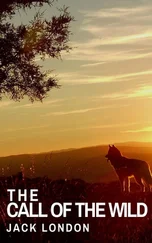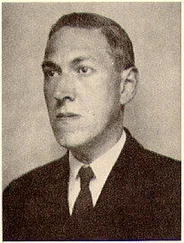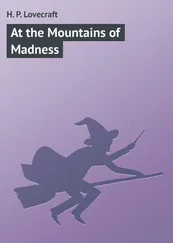The more I looked at them, the more I saw that my serious estimate of Akeley and his story had not been unjustified. Certainly, these pictures carried conclusive evidence of something in the Vermont hills which was at least vastly outside the radius of our common knowledge and belief. The worst thing of all was the footprint—a view taken where the sun shone on a mud patch somewhere in a deserted upland. This was no cheaply counterfeited thing, I could see at a glance; for the sharply defined pebbles and grass-blades in the field of vision gave a clear index of scale and left no possibility of a tricky double exposure. I have called the thing a “footprint”, but “claw-print” would be a better term. Even now I can scarcely describe it save to say that it was hideously crab-like, and that there seemed to be some ambiguity about its direction. It was not a very deep or fresh print, but seemed to be about the size of an average man’s foot. From a central pad, pairs of saw-toothed nippers projected in opposite directions—quite baffling as to function, if indeed the whole object were exclusively an organ of locomotion.
Another photograph—evidently a time-exposure taken in deep shadow—was of the mouth of a woodland cave, with a boulder of rounded regularity choking the aperture. On the bare ground in front of it one could just discern a dense network of curious tracks, and when I studied the picture with a magnifier I felt uneasily sure that the tracks were like the one in the other view. A third picture shewed a druid-like circle of standing stones on the summit of a wild hill. Around the cryptic circle the grass was very much beaten down and worn away, though I could not detect any footprints even with the glass. The extreme remoteness of the place was apparent from the veritable sea of tenantless mountains which formed the background and stretched away toward a misty horizon.
But if the most disturbing of all the views was that of the footprint, the most curiously suggestive was that of the great black stone found in the Round Hill woods. Akeley had photographed it on what was evidently his study table, for I could see rows of books and a bust of Milton in the background. The thing, as nearly as one might guess, had faced the camera vertically with a somewhat irregularly curved surface of one by two feet; but to say anything definite about that surface, or about the general shape of the whole mass, almost defies the power of language. What outlandish geometrical principles had guided its cutting—for artificially cut it surely was—I could not even begin to guess; and never before had I seen anything which struck me as so strangely and unmistakably alien to this world. Of the hieroglyphics on the surface I could discern very few, but one or two that I did see gave me rather a shock. Of course they might be fraudulent, for others besides myself had read the monstrous and abhorred Necronomicon of the mad Arab Abdul Alhazred; but it nevertheless made me shiver to recognise certain ideographs which study had taught me to link with the most blood-curdling and blasphemous whispers of things that had had a kind of mad half-existence before the earth and the other inner worlds of the solar system were made.
Of the five remaining pictures, three were of swamp and hill scenes which seemed to bear traces of hidden and unwholesome tenancy. Another was of a queer mark in the ground very near Akeley’s house, which he said he had photographed the morning after a night on which the dogs had barked more violently than usual. It was very blurred, and one could really draw no certain conclusions from it; but it did seem fiendishly like that other mark or claw-print photographed on the deserted upland. The final picture was of the Akeley place itself; a trim white house of two stories and attic, about a century and a quarter old, and with a well-kept lawn and stone-bordered path leading up to a tastefully carved Georgian doorway. There were several huge police dogs on the lawn, squatting near a pleasant-faced man with a close-cropped grey beard whom I took to be Akeley himself—his own photographer, one might infer from the tube-connected bulb in his right hand.
From the pictures I turned to the bulky, closely written letter itself; and for the next three hours was immersed in a gulf of unutterable horror. Where Akeley had given only outlines before, he now entered into minute details; presenting long transcripts of words overheard in the woods at night, long accounts of monstrous pinkish forms spied in thickets at twilight on the hills, and a terrible cosmic narrative derived from the application of profound and varied scholarship to the endless bygone discourses of the mad self-styled spy who had killed himself. I found myself faced by names and terms that I had heard elsewhere in the most hideous of connexions—Yuggoth, Great Cthulhu, Tsathoggua, Yog-Sothoth, R’lyeh, Nyarlathotep, Azathoth, Hastur, Yian, Leng, the Lake of Hali, Bethmoora, the Yellow Sign, L’mur-Kathulos, Bran, and the Magnum Innominandum—and was drawn back through nameless aeons and inconceivable dimensions to worlds of elder, outer entity at which the crazed author of the Necronomicon had only guessed in the vaguest way. I was told of the pits of primal life, and of the streams that had trickled down therefrom; and finally, of the tiny rivulet from one of those streams which had become entangled with the destinies of our own earth.
My brain whirled; and where before I had attempted to explain things away, I now began to believe in the most abnormal and incredible wonders. The array of vital evidence was damnably vast and overwhelming; and the cool, scientific attitude of Akeley—an attitude removed as far as imaginable from the demented, the fanatical, the hysterical, or even the extravagantly speculative—had a tremendous effect on my thought and judgment. By the time I laid the frightful letter aside I could understand the fears he had come to entertain, and was ready to do anything in my power to keep people away from those wild, haunted hills. Even now, when time has dulled the impression and made me half question my own experience and horrible doubts, there are things in that letter of Akeley’s which I would not quote, or even form into words on paper. I am almost glad that the letter and record and photographs are gone now—and I wish, for reasons I shall soon make clear, that the new planet beyond Neptune had not been discovered.
With the reading of that letter my public debating about the Vermont horror permanently ended. Arguments from opponents remained unanswered or put off with promises, and eventually the controversy petered out into oblivion. During late May and June I was in constant correspondence with Akeley; though once in a while a letter would be lost, so that we would have to retrace our ground and perform considerable laborious copying. What we were trying to do, as a whole, was to compare notes in matters of obscure mythological scholarship and arrive at a clearer correlation of the Vermont horrors with the general body of primitive world legend.
For one thing, we virtually decided that these morbidities and the hellish Himalayan Mi-Go were one and the same order of incarnated nightmare. There were also absorbing zoölogical conjectures, which I would have referred to Professor Dexter in my own college but for Akeley’s imperative command to tell no one of the matter before us. If I seem to disobey that command now, it is only because I think that at this stage a warning about those farther Vermont hills—and about those Himalayan peaks which bold explorers are more and more determined to ascend—is more conducive to public safety than silence would be. One specific thing we were leading up to was a deciphering of the hieroglyphics on that infamous black stone—a deciphering which might well place us in possession of secrets deeper and more dizzying than any formerly known to man.
Читать дальше












